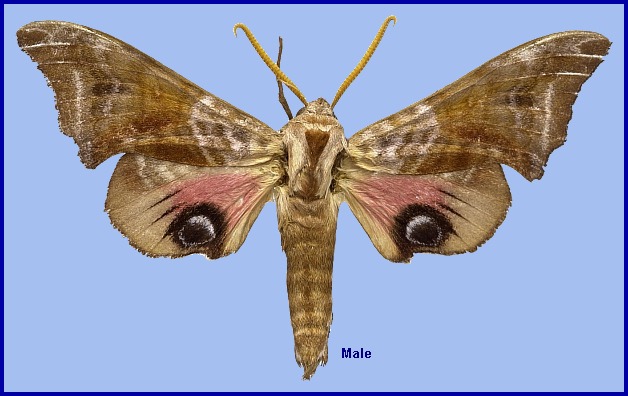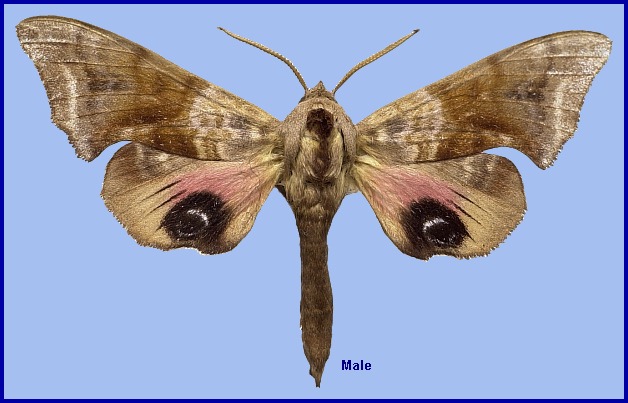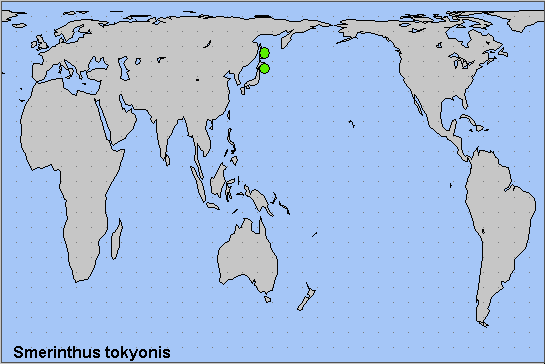

Smerinthus tokyonis Matsumura, 1921, Thousand Insects Japan (Additam.) 4: 751. Type locality: Japan: Honshu, Tokyo.
[Further details on this species in Japan, as well as photos of many stages, can be found on Digital Moths of Japan.]
A rare montane species. However, with the use of Enkianthus campanulatus as a garden ornamental, this species has taken up residence in the suburbs of Tokyo.
Japan: 14.iv (Honshu, Ibaraki Pref.); 25.iv-21.v (Honshu, Kanagawa Pref.); 8-9.v (Honshu); 18.v-29.vii (Honshu); 23.v (Shikoku); 6.viii-4.ix (Hokkaido, Nari-gawa); 13.ix (Honshu, Yokohama).
The peak of emergence appears to be in June/July, but individuals can be met with from mid April to mid September, indicating a partial second brood in some years.
OVUM: Undescribed.
LARVA: Very similar to that of Smerinthus ocellata (Linnaeus, 1758), but smaller. Basic body colour apple-green, with seven yellow oblique lateral stripes, that extending down from the lilac-blue horn being very pronounced and more white (Kameda, 2014).
PUPA: Undescribed.
Larval hostplants. Apparently confined to Enkianthus campanulatus (Ericaceae).
Tachinidae: Exorista sorbillans (Wiedemann, 1830).
Japan: Southern Hokkaido (Nari-gawa); Honshu (Tokyo; Kita-Karuisawa; Gozaishodake; Karuizawa; Bushi; Mitsumine; Kiyosato, 1300m; Fujisawa; Yokohama; Yabuki; Toyama; Osaka); Shikoku (Ino); Kyushu (Miyasaki; Nagasaki Pref.).
The distribution of this species in Japan is patchy and restricted to certain montane areas. On Honshu, the only confirmed records are from the Prefectures of Fukui, Toyama, Kanagawa, Ibaraki, Fukushima, Chiba, Gifu, Aichi, Mie and Miyagi.
Endemic to Japan. [Records for China are erroneous and are due to the misidentification of Smerinthus minor Mell, 1937.]

 Return to Sphingidae of the Eastern Palaearctic species list
Return to Sphingidae of the Eastern Palaearctic species list